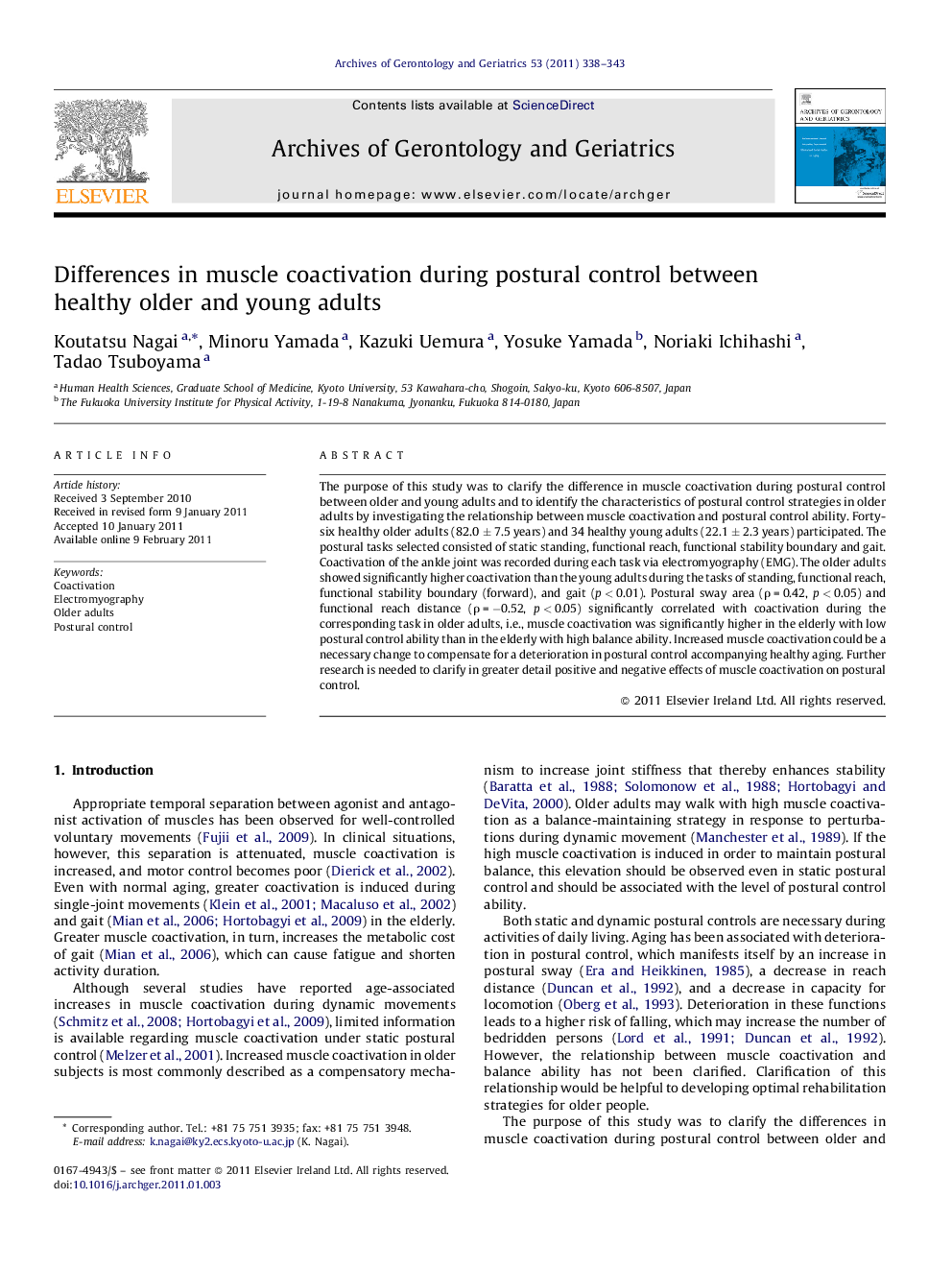| کد مقاله | کد نشریه | سال انتشار | مقاله انگلیسی | نسخه تمام متن |
|---|---|---|---|---|
| 8258285 | 1534452 | 2011 | 6 صفحه PDF | دانلود رایگان |
عنوان انگلیسی مقاله ISI
Differences in muscle coactivation during postural control between healthy older and young adults
دانلود مقاله + سفارش ترجمه
دانلود مقاله ISI انگلیسی
رایگان برای ایرانیان
کلمات کلیدی
موضوعات مرتبط
علوم زیستی و بیوفناوری
بیوشیمی، ژنتیک و زیست شناسی مولکولی
سالمندی
پیش نمایش صفحه اول مقاله

چکیده انگلیسی
The purpose of this study was to clarify the difference in muscle coactivation during postural control between older and young adults and to identify the characteristics of postural control strategies in older adults by investigating the relationship between muscle coactivation and postural control ability. Forty-six healthy older adults (82.0 ± 7.5 years) and 34 healthy young adults (22.1 ± 2.3 years) participated. The postural tasks selected consisted of static standing, functional reach, functional stability boundary and gait. Coactivation of the ankle joint was recorded during each task via electromyography (EMG). The older adults showed significantly higher coactivation than the young adults during the tasks of standing, functional reach, functional stability boundary (forward), and gait (p < 0.01). Postural sway area (Ï = 0.42, p < 0.05) and functional reach distance (Ï = â0.52, p < 0.05) significantly correlated with coactivation during the corresponding task in older adults, i.e., muscle coactivation was significantly higher in the elderly with low postural control ability than in the elderly with high balance ability. Increased muscle coactivation could be a necessary change to compensate for a deterioration in postural control accompanying healthy aging. Further research is needed to clarify in greater detail positive and negative effects of muscle coactivation on postural control.
ناشر
Database: Elsevier - ScienceDirect (ساینس دایرکت)
Journal: Archives of Gerontology and Geriatrics - Volume 53, Issue 3, NovemberâDecember 2011, Pages 338-343
Journal: Archives of Gerontology and Geriatrics - Volume 53, Issue 3, NovemberâDecember 2011, Pages 338-343
نویسندگان
Koutatsu Nagai, Minoru Yamada, Kazuki Uemura, Yosuke Yamada, Noriaki Ichihashi, Tadao Tsuboyama,